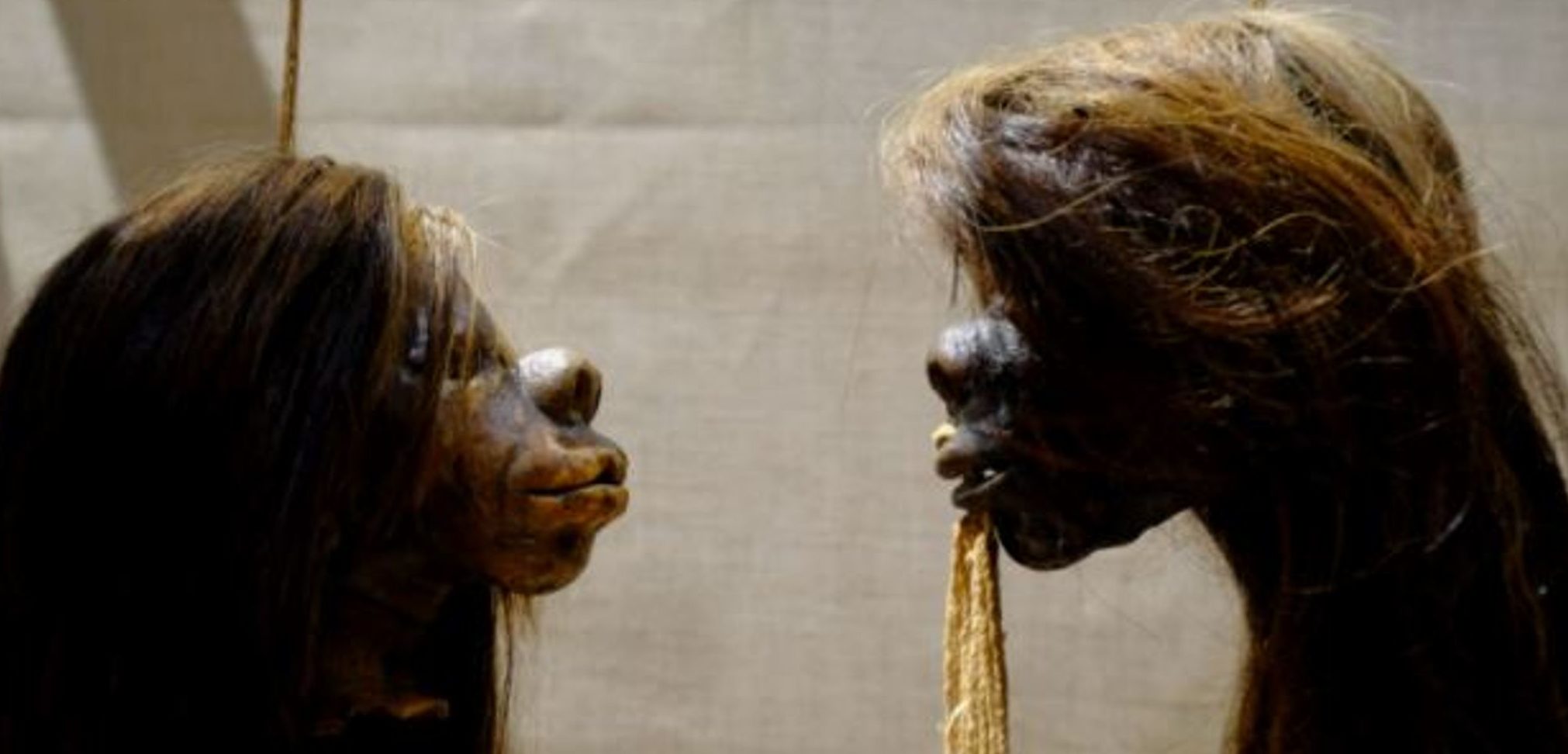The Pitt Rivers Museum in Oxford is opening today, after 6 months of closure over lockdown, and it is missing its most famous exhibit: an array of shrunken heads (tsantsa) — mostly human, some monkey — displayed in a cabinet labelled ‘Treatment of Dead Enemies’. The tsantsa were acquired between 1884 and 1936 by Western anthropologists who had purchased them from members of the Shuar, an indigenous group who live in a region of tropical rainforest that extends across Ecuador and Peru.
The museum’s new director, Laura Van Broekhoven, reports that the Shuar descendants to whom she has spoken are “actually very glad” to see representations of their culture displayed in British museums. But she has nevertheless decided to remove the tsantsa from display out of concern for their racist associations:
The Pitt Rivers is unusual among anthropology museums in that it displays artefacts, not by region, but by theme. This means that, although the chaotic arrangements and handwritten labels give a superficial impression of Victorian fustiness, the attentive visitor comes away with a far more open-minded understanding of the diversity of human societies. A cabinet containing baby carriers, for instance, or fishing equipment, or musical instruments, or cooking implements, gives an impression more of sameness than of difference, because it’s obvious to look at these objects that their creators, despite being distant from one another in terms of time and place, all came up with very similar solutions to the same human problems.
The inclusion of modern Western objects in these displays reinforces that impression of sameness, and sometimes highlights oddities in our own societies that we might not always notice. My favourite cabinet, for instance, contains beauty implements, including neck rings used to elongate the necks of Kayan women placed alongside a 21st century silicone breast implant. This placement means that anyone tempted to think the neck rings “savage”, “primitive”, or “gruesome” is sharply reminded of our own culture’s stranger beauty practices.
Rather than attempting to de-colonise the Pitt Rivers by removing the tsantsa from display, I have an alternative suggestion for Dr Van Broekhoven: add some Western objects to the ‘Treatment of Dead Enemies’ cabinet.
Perhaps, for instance, the cabinet could include the page from a 1943 issue of Time Magazine that includes a photo of a young American woman gazing on a “Jap skull” sent to her by her sweetheart, a soldier fighting in the Pacific. Or one of the spikes on which decapitated heads were once displayed above the stone gateway at the southern end of London Bridge. Preparing and displaying the bodies of enemies or traitors is hardly unique to the Shuar. On the contrary, capital punishment is a human universal: it is modern Britain that is unusual in having abolished the practice only half a century ago, and in defiance of popular sentiment.
By condemning the display of decapitated heads, Dr Van Broekhoven is inadvertently displaying her own ethno- and present-centrism. A far better option — in keeping with the museum’s other displays — would be to invite visitors to view the tsantsa alongside similar examples from closer to home. This would remind us that humans the world over are capable of exactly the same kinds of brutality.











Join the discussion
Join like minded readers that support our journalism by becoming a paid subscriber
To join the discussion in the comments, become a paid subscriber.
Join like minded readers that support our journalism, read unlimited articles and enjoy other subscriber-only benefits.
Subscribe